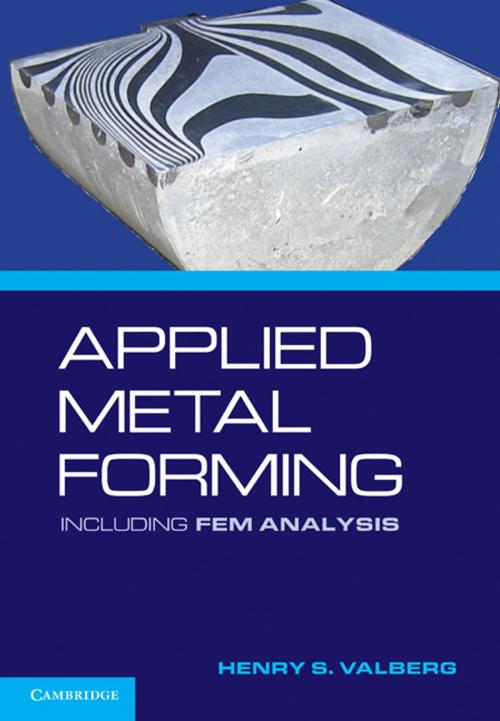Applied Metal Forming
Including FEM Analysis
Nonfiction, Science & Nature, Technology, Metallurgy, Science, Chemistry, Technical & Industrial| Author: | Henry S. Valberg | ISBN: | 9781316171141 |
| Publisher: | Cambridge University Press | Publication: | March 31, 2010 |
| Imprint: | Cambridge University Press | Language: | English |
| Author: | Henry S. Valberg |
| ISBN: | 9781316171141 |
| Publisher: | Cambridge University Press |
| Publication: | March 31, 2010 |
| Imprint: | Cambridge University Press |
| Language: | English |
Applied Metal Forming: Including FEM Analysis describes metal forming theory and how experimental techniques can be used to study any metal forming operation with great accuracy. For each primary class of processes, such as forging, rolling, extrusion, wiredrawing, and sheet-metal forming, it explains how FEA (Finite Element Analysis) can be applied with great precision to characterize the forming condition and in this way optimize the processes. FEA has made it possible to build very realistic FEM-models of any metal forming process, including complex three-dimensional forming operations, in which complex products are shaped by complex dies. Thus, using FEA it is now possible to visualize any metal forming process and to study strain, stresses, and other forming conditions inside the parts being manufactured as they develop throughout the process.
Applied Metal Forming: Including FEM Analysis describes metal forming theory and how experimental techniques can be used to study any metal forming operation with great accuracy. For each primary class of processes, such as forging, rolling, extrusion, wiredrawing, and sheet-metal forming, it explains how FEA (Finite Element Analysis) can be applied with great precision to characterize the forming condition and in this way optimize the processes. FEA has made it possible to build very realistic FEM-models of any metal forming process, including complex three-dimensional forming operations, in which complex products are shaped by complex dies. Thus, using FEA it is now possible to visualize any metal forming process and to study strain, stresses, and other forming conditions inside the parts being manufactured as they develop throughout the process.















